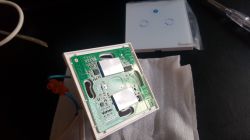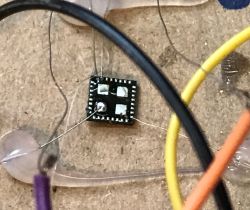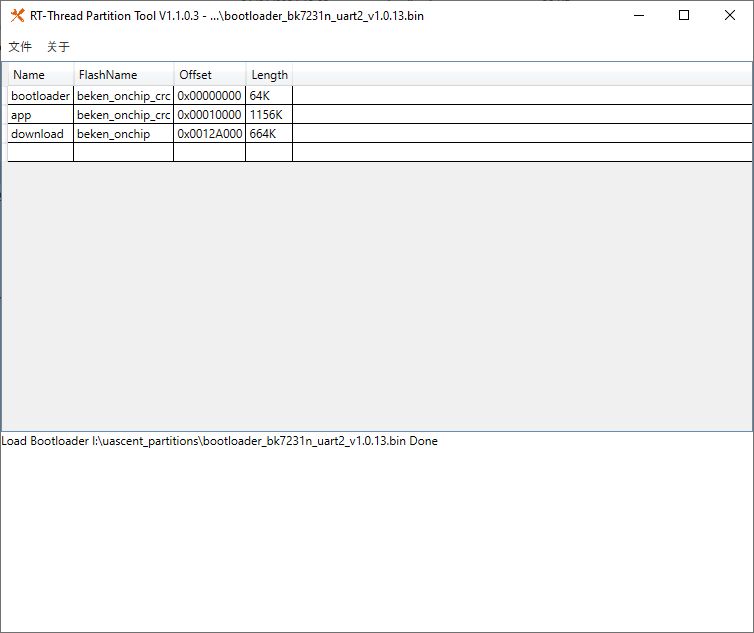FAQ
TL;DR: Prevent simultaneous UP/DOWN on a Sonoff T1 controlling a screen/blind motor by electrical interlocking: 1 relay, 2 NO/NC contacts, 230 V coil. "…a relay with a 230V coil that has two pairs of NO-NC contacts." [Elektroda, kkas12, post #17747522]
Why it matters: DIYers using Sonoff Touch T1 for screen/blind motors can avoid simultaneous commands that destroy the motor.
Quick-Facts
- Service warning: powering UP and DOWN together can burn the motor; limits won’t save it. [Elektroda, ciubas, post #17747473]
- Simple hardware fix: a 230 V coil relay with two changeover (NO/NC) contacts provides electrical interlocking. [Elektroda, kkas12, post #17747522]
- Firmware path: reflash to Tasmota and configure to block both relays simultaneously. [Elektroda, Loker, post #17747554]
- Minimalist NC scheme: route UP through NC; DOWN also drives the coil to open UP safely. [Elektroda, kood, post #17754405]
- H‑bridge/half‑bridge drivers exist but are overkill here. [Elektroda, Loker, post #17754091]
Quick Facts
- Service warning: powering UP and DOWN together can burn the motor; limits won’t save it. [Elektroda, ciubas, post #17747473]
- Simple hardware fix: a 230 V coil relay with two changeover (NO/NC) contacts provides electrical interlocking. [Elektroda, kkas12, post #17747522]
- Firmware path: reflash to Tasmota and configure to block both relays simultaneously. [Elektroda, Loker, post #17747554]
- Minimalist NC scheme: route UP through NC; DOWN also drives the coil to open UP safely. [Elektroda, kood, post #17754405]
- H‑bridge/half‑bridge drivers exist but are overkill here. [Elektroda, Loker, post #17754091]
Can I use a Sonoff Touch T1 to control a projector screen motor safely?
Yes, but not out of the box. You must stop both directions from energizing together. Do this in firmware or hardware. One user suggested two options: reflash to Tasmota or add an electronic interlock. Either approach blocks simultaneous relay drive on the T1. [Elektroda, Loker, post #17747554]
What is the simplest hardware to prevent simultaneous UP/DOWN?
Use one relay with a 230 V coil and two changeover contacts (DPDT). Wire its NO/NC pairs to enforce mutual exclusion. This prevents UP and DOWN from being live at the same time. "Two pairs of NO-NC contacts" are sufficient here. [Elektroda, kkas12, post #17747522]
How do I wire the NC-contact interlock?
Follow this simple NC-contact interlock:
- Route the UP feed through the relay’s NC contact.
- Wire the DOWN output to the motor and to the relay’s 230 V coil.
- When DOWN is active, the coil opens NC, blocking UP; release restores UP.
This blocks opposite feeds reliably. [Elektroda, kood, post #17754405]
Can firmware alone prevent this? How to set it up?
Yes. Reflash Sonoff to Tasmota and enable interlock so only one relay can be on. "Reprogram Sonoff with Tasmota … so that it is not possible to switch on both relays simultaneously." Hardware interlocking remains a good backup for safety. [Elektroda, Loker, post #17747554]
What is this protection called?
It’s an electrical interlock. You implement it using two changeover contacts (2PDT) driven by a 230 V coil. The contacts prevent opposite feeds from being live together. [Elektroda, kkas12, post #17747522]
Do the motor’s built-in limit switches protect against simultaneous feeds?
No. The limits stop travel at top and bottom, but do not block opposite supplies. The service warned that powering UP and DOWN together can burn the motor. Treat limits as position stops, not safety interlocks. [Elektroda, ciubas, post #17747473]
Is an H‑bridge a good idea for 230 V AC screens?
No. Half‑bridge or H‑bridge drivers with shoot‑through protection suit DC stages. For 230 V AC screen motors, that is "a bit of form over substance." Use relay interlocking instead. [Elektroda, Loker, post #17754091]
What happens if both directions are energized accidentally?
The motor may overheat or fail. The service explicitly warned of burn‑out if UP and DOWN are fed together. End limits do not prevent that condition. Add interlocking to eliminate this failure mode. [Elektroda, ciubas, post #17747473]
Can I replicate my louvre switch behavior with Sonoff?
Yes. Traditional louvre switches mechanically interlock directions and allow sustained voltage, while limits stop travel. Emulate that with an NC-contact relay interlock or firmware interlocking. This preserves safe one-direction-at-a-time operation. [Elektroda, ciubas, post #17747473]
Will a single DPDT relay be enough for mutual exclusion?
Yes. A DPDT relay (two changeover contacts) with a 230 V coil can interlock the UP and DOWN feeds. Wire the contacts to cut one path whenever the opposite direction is active. [Elektroda, kkas12, post #17747522]
I don’t want to reflash firmware. What else can I do?
Install a small electronic interlock on the relay control signals. It blocks driving one relay when the other is active. This achieves mutual exclusion without modifying firmware. [Elektroda, Loker, post #17747554]
Is there a ready-made controller for blinds I should consider instead?
Yes. Use a controller designed for shutter or screen motors if you prefer a turnkey solution. It avoids improvised add‑ons and supports safe, interlocked operation by design. [Elektroda, kkas12, post #17747412]
Can I combine firmware and hardware interlocking for extra safety?
Yes. Flash Tasmota to enforce software interlock, and add the relay interlock as a physical safeguard. "First off - tasmot. Plus a relay as above." This layered approach reduces risk. [Elektroda, mpier, post #17747539]
 .
.
 .
.





